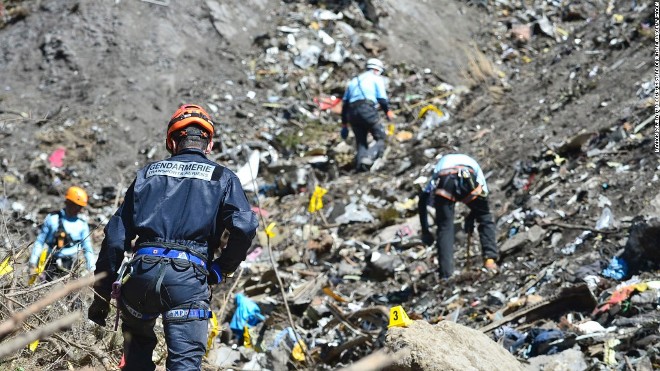Cockpit Security Highlighted By Germanwings Crash
The Germanwings crash resulted to a review on the staffing policy of some airlines during a flight. A number of airlines have already changed existing procedures ahead of any formal direction from regulators that may require the presence of two crewmembers inside the cockpit during the flight at all times.
The changes resulted from findings that the co-pilot may have deliberately crashed Flight 9295 after he locked the captain out of the cockpit. Stricter rules are currently being discussed requiring at least two crew members inside the cockpit during a flight. The two crewmembers may be two other pilots or one pilot and a flight attendant.
The Germanwings crash also prompted discussions over the protection used safeguard the cockpit of an aircraft and the function of its reinforced doors. The reinforced doors were installed following the terrorist attacks in the United States in September 11, 2001.
For the moment, European aviation authorities do not require the presence of two crew members inside the cockpit at all times. However, air safety regulators in the UK recommended a review of procedures among airlines to ensure the presence of two people inside the cockpit. Transport regulators in Canada have also required airlines to ensure that two crewmembers are inside the cockpit all the time. This issue is expected to be discussed by other air safety regulators around the world.
The parent of Germanwings, Deutsche Lufthansa AG, revealed that it has yet to change its existing procedures that allow the cockpit to be temporarily manned by one pilot. The two-crew policy is already being implemented by a number of other airlines following the result of the initial investigation on the Germanwings crash.
The presence of two crewmembers inside the cockpit can reduce any risks posed by the reinforced doors of the cockpit. Since the doors are designed to be impenetrable, the Germanwings crash has drawn attention to the negative effects of making the cockpit inaccessible from the cabin.
Prior to the 9/11 attacks, cockpit doors can be easily accessed from the cabin. There were some instances when conventional keys were used by pilots in getting into the cockpit. However, the hijacking of four planes in the US during the 9/11 attacks saw the use of bullet-proof doors with a stronger locking mechanism for the cockpit. These doors can only be opened through switches located inside the cockpit.
Majority of Airbus A320 planes have a crew-controlled locking mechanism that prevents illegal access into the flight deck. The plane involved in the Germanwings crash was an A320 jet. Although a keypad code can be used in entering the cockpit, entry can be blocked for at least five minutes through a switch located inside the cockpit. While the crash may not result to the removal of the reinforced doors, changes in the cockpit staffing policy may be implemented.
US airline regulators require a flight attendant to take the place of a pilot who may leave the cockpit. An oxygen mask is also worn by the remaining pilot in case of rapid decompression situations. The second person in the cockpit is supposed to verify the identity of anyone who wants to enter the cockpit through a video display or peephole.
A number of incidents were noted in the past in connection to the door-opening mechanism of planes. An All Nippon Airways pilot operated the rudder control switch by mistake after the captain wanted to go back into the cockpit. This caused the plane to rapidly dive from 41,000 feet as it went down by 1.2 miles within thirty seconds. It also flew upside down for brief period of time. The incident resulted to injuries to two flight attendants before the plane was able to land safely.
Boeing was also required by US and European airline regulators to repair a good number of reinforced doors. The doors of some planes also jammed or did not operate properly. A Delta Air Lines plane was compelled to make an emergency landing in January without a second pilot when the door mechanism did not reopen. These incidents are expected to be taken into consideration when a review on cockpit procedures is made following the Germanwings crash in the Alps.
